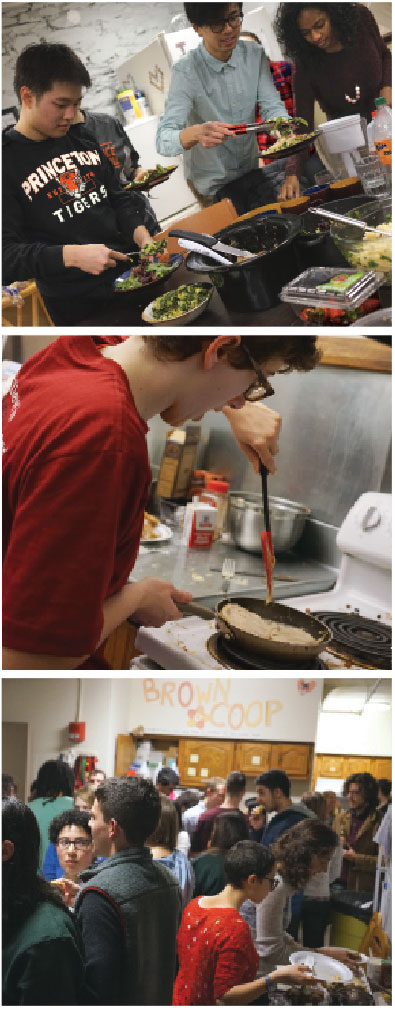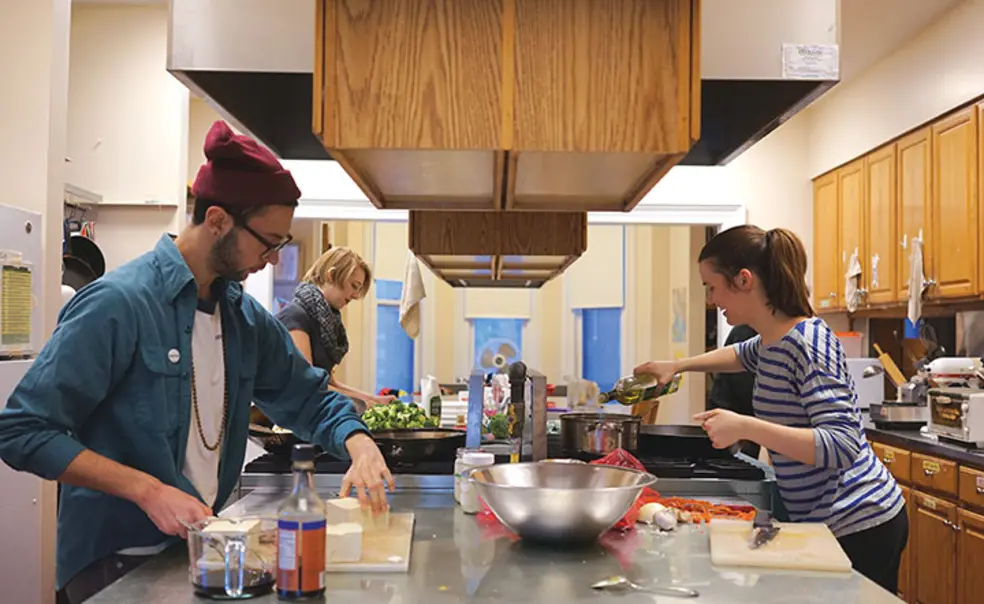Cooking for a Crowd
Food co-ops grow in popularity for those willing to pitch in and help
 Left, from top: Digging in at the International Food Co-op; cooking pancakes at the Real Food Co-op; the Brown Co-op is the first stop of the annual Co-op Hop.
Left, from top: Digging in at the International Food Co-op; cooking pancakes at the Real Food Co-op; the Brown Co-op is the first stop of the annual Co-op Hop.
For those who crave heartwarming, home-cooked meals and a tight-knit community to share them with, Princeton’s student-run food cooperatives are the prime culinary alternative to the dining halls and eating clubs.
At each of Princeton’s four co-ops –– the vegetarian 2 Dickinson Street (known as 2D), Brown, International Food Co-op, and the Real Food Co-op –– students take on two-hour cooking shifts on a weekly basis, preparing meals to feed crowds that range from 12 to almost 50 people. Dinner menus feature items such as sesame tofu, freshly baked bread, fish tacos, and Thai grilled chicken.
For many, cooking a meal for a family of four is daunting enough. So what tips and tricks do the co-ops have for feeding large groups, night in and night out?
“There are no tricks I know of, except that one has to cook four times as much as the recipe says,” explained Dora Demszky ’17. She is 2D’s “Minister of Decay,” in charge of composting food waste (there is also a Minister of Defense responsible for sharpening knives, a Minister of Love in charge of organizing social events, and the somewhat Orwellian-sounding Ministers of Truth, who make sure everyone has done their chores).
The co-ops have increased in popularity as more students explore independent-style eating options. More than 200 people are on the waiting list for 2D alone, where Vidushi Sharma ’17 says “the number has skyrocketed over the years.”












No responses yet